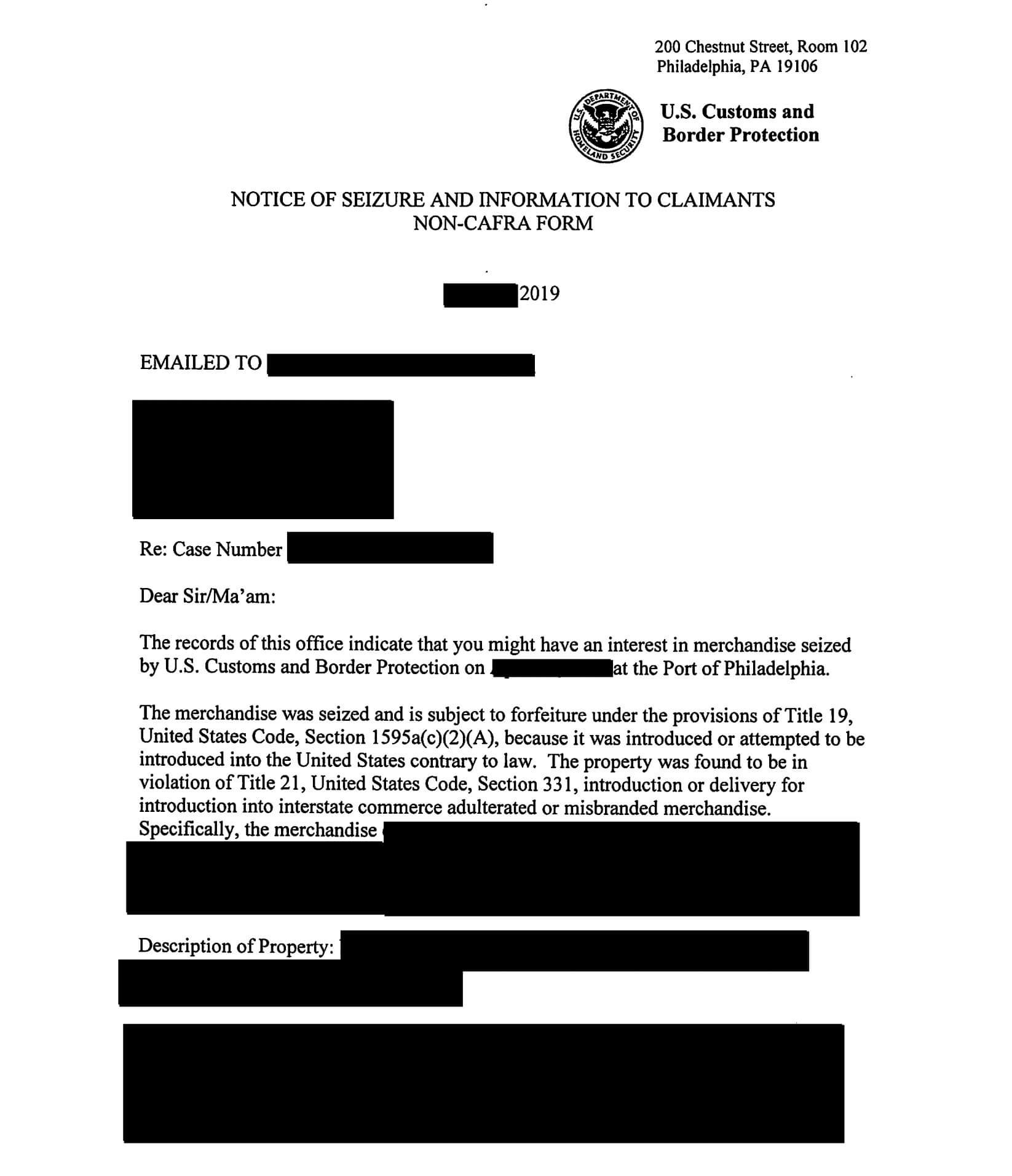Importing goods can be a complex process, and proper classification is essential for ensuring a smooth and compliant importation. In this comprehensive guide, we will take you through each step of the classification process, explaining its importance, providing in-depth insights, and offering practical tips to help you accurately classify your goods for import.
Understanding the Importance of Proper Classification for Importing Goods
Proper classification of goods is fundamental to international trade. It allows customs authorities to identify and categorize products based on their characteristics, composition, and intended use. This classification is crucial for determining the applicable tariff rates, duties, and taxes that may apply to your imported goods.
Furthermore, accurate classification ensures compliance with regulatory requirements, such as trade agreements, restrictions, and licensing obligations. For legal purposes, proper classification is required to ensure that all import and export activities comply with both international and national regulations. Failing to classify goods correctly can lead to delays in customs clearance, increased costs, penalties, and even legal consequences. Therefore, understanding the importance of proper classification is essential for any importer.
Why You Need to Classify Your Goods Correctly When Importing
When importing goods, classifying them correctly is vital to determine the applicable customs duties and taxes. Misclassifying a product can result in higher import costs or, conversely, lead to missed opportunities for tariff savings through preferential trade agreements or duty exemptions. By ensuring accurate classification, you can optimize your import process and maintain a competitive edge in the global market.
Using the correct commodity code is essential for compliance with customs regulations and to benefit from any applicable free trade agreement, which can reduce or eliminate tariffs if your goods qualify.
Proper classification also helps in complying with various regulatory requirements and quality standards specific to certain products. By correctly identifying your goods, you can ensure compliance with rules related to labeling, product safety, environmental regulations, and more. Ultimately, accurate classification minimizes risks, avoids unnecessary costs, and supports efficient international trade operations.
The Basics of Customs Classification for Importers
Customs classification involves assigning a specific code to your imported goods according to a harmonized international standard known as the Harmonized System (HS). The HS is a global classification system developed by the World Customs Organization (WCO) and is widely used for customs declaration purposes.
The harmonized tariff schedule uses a numerical code, also known as a commodity code, to uniquely identify goods for customs purposes.
The HS code consists of a series of digits that correspond to specific product characteristics and categories. Each code represents a unique classification, allowing customs authorities worldwide to identify and treat goods uniformly. It is important to note that customs regulations and trade policies may vary by country, but the HS code provides a foundation for international trade classification.
Determining the Harmonized System (HS) Code for Your Goods
The first step in classifying your goods is determining the appropriate HS code. To do this, you need to thoroughly analyze your product and consider its essential characteristics. Start by identifying the main function, composition, materials used, and any additional factors that differentiate your goods from similar products. Consulting the HS code book or seeking expert advice from trade consultants or customs brokers can be beneficial.
Once you have identified potential HS codes, refer to the specific code description and associated explanatory notes within the HS code book. These descriptions provide valuable guidance and help you understand how your goods fit within each possible code. The article description, which includes both general description and specific description, is used to match your product to the correct six digit hs code. Carefully compare your product’s characteristics with the criteria stated in the code descriptions to ensure accurate classification.
Exploring the World Customs Organization (WCO) HS Code System
The World Customs Organization (WCO) is the international body responsible for developing, maintaining, and promoting the HS code system. The WCO continually updates and revises the HS code to reflect changes in technology, market trends, and new trade developments.
Understanding the structure and format of the HS code is essential for accurate classification. The code is organized into sections and chapters, with each chapter referring to a specific category of goods. Sections are further divided into headings, subheadings, and, in some cases, subheadings within subheadings. This hierarchical structure allows for more precise classification as you navigate through the code system.
Regions such as the European Union use their own versions of the harmonized tariff schedule, like TARIC, and accurate classification depends on understanding subchapter notes and the relative section within the code hierarchy.
How to Identify and Interpret HS Code Descriptions
HS code descriptions provide detailed information about product characteristics, which helps you determine the correct classification. When interpreting these descriptions, pay attention to the essential components of your goods and match them with the wording and criteria outlined in the codes. Be aware that descriptions may include technical terms, industry jargon, or specialized terminology, and understanding these terms is important for accurate classification.
When interpreting descriptions, it is important to determine if your product is considered an article complete, article incomplete, or unfinished article, as this affects its classification.
If you encounter multiple potential codes with similar descriptions, evaluate each code carefully and consider any specific exclusions or inclusions mentioned. Cross-referencing code descriptions with the actual product characteristics and consulting trade experts can significantly assist you in reaching the correct classification decision.
Navigating the General Rules of Interpretation (GRIs) for Classification
The General Rules of Interpretation (GRIs) are a set of six guiding principles established by the WCO to assist in classifying goods. These rules provide criteria for selecting the appropriate code when multiple options seem applicable. Familiarize yourself with the GRIs to gain a better understanding of how to approach classification challenges and ensure compliance with the system. The following provisions of the GRIs outline the hierarchy and methodology for determining the proper heading for your goods.
Each GRI addresses specific scenarios, such as mixed goods, composite goods, parts, and incomplete or unfinished products. When goods could fall under two or more headings or different headings, the above rules must be followed to determine the proper heading. Carefully evaluate your goods against each GRI, using all available information and considering the primary characteristics of your products to determine the most suitable classification. When you compare subheadings, only subheadings at the same hierarchical level should be compared, and if classification cannot be determined, numerical order is used as a last resort. Such headings and their associated notes are critical for accurate classification.
Understanding the Essential Character in Classification
When classifying composite goods consisting of two or more substances or materials, determining the essential character is a critical step in the classification process. The essential character refers to the component or material that imparts the primary function or identity to the imported merchandise. According to the General Rules of Interpretation (GRI) 3, correctly classifying composite goods often hinges on identifying which element gives the product its essential character.
For example, consider a ready-to-cook spaghetti meal that includes spaghetti, cheese, and tomato sauce. Even though the set contains multiple substances, it is classified under the heading for spaghetti because the spaghetti provides the essential character of the meal. This principle applies to a wide range of composite goods, from drawing instrument cases to musical instrument cases, where the main function or use determines the correct classification.
Importers must exercise reasonable care when evaluating the essential character of their products. This involves a careful analysis of the product’s composition, intended use, and the role each constituent material plays in the final article. By focusing on the essential character, importers can ensure compliance with customs regulations, avoid misclassification, and facilitate a smoother import process. Understanding and applying this concept is vital for accurate classification and for meeting the requirements set by customs authorities.
Key Factors to Consider When Classifying Your Imported Goods
When classifying your goods for import, several key factors must be considered. Goods made from different materials or presented as a composite good must be classified based on the component that imparts the essential character or meets a particular need, such as when goods are put up in sets for retail sale. These include the function and principal use of the goods, their materials and composition, any distinguishing features or attributes, and their specific industry or product-related regulations. Additionally, it is crucial to examine any applicable trade agreements, preferential tariff programs, or regional customs union arrangements that could impact the classification and associated duties.
Thoroughly researching and understanding these factors will enable you to accurately determine the most appropriate HS code for your goods, ensuring compliance with regulations and facilitating a smooth import process. Accurate product classification in these scenarios is essential to avoid penalties and ensure proper adherence to customs rules.
Common Challenges and Pitfalls in Classifying Imported Goods
Classifying imported goods may present various challenges and pitfalls that importers should be aware of. One common challenge is dealing with complex or innovative products that do not have a straightforward classification. In such cases, consulting experts, undertaking product testing, or seeking official rulings from customs authorities can help overcome these challenges.
Ensuring the commercial invoice contains accurate classification information, including correct HTS codes and measurement units, is essential to avoid delays and misclassification during customs clearance.
Additionally, language barriers, different interpretation of code descriptions across countries, and ambiguous guidance documents can further complicate the classification process. Staying updated with regulatory changes, seeking guidance from specialized trade professionals, and maintaining open communication with customs authorities can help navigate these challenges effectively.
Tips and Techniques for Accurate Classification of Imported Products
Accurate classification of imported goods requires attention to detail and a systematic approach. Here are some tips and techniques to help you achieve precise classification:
- Thoroughly analyze the product’s composition, materials, and intended use.
- Consult relevant HS code books, explanatory notes, and official customs publications.
- Consider seeking expert advice from customs brokers, trade consultants, or specialized industry professionals.
- Use product samples, prototypes, or technical drawings to aid in classification.
- Stay informed about tariff changes, new product regulations, and trade agreements that could impact classification.
- Maintain accurate records of your classification decisions, supporting documentation, and any subsequent customs rulings or appeals.
- Consider the classification of packing containers, as they are generally classified with the goods they contain, except in specific cases.
By implementing these tips and techniques, you can enhance your classification process and ensure the accuracy and compliance of your imported products.
Understanding Tariff Rates and Duties Based on Classified Goods
Once you have classified your goods correctly, you can determine the applicable tariff rates and duties. Tariff rates vary depending on the HS code classification, the country of import, and any preferential trade agreements in place. By identifying the correct HS code, you can calculate the accurate duty amount, facilitating cost projections, budgeting, and overall import planning. The general rate of duty is applied to the value of the imported product unless special circumstances apply.
It is essential to keep in mind that customs authorities may conduct periodic audits or verifications to ensure the accuracy of your classifications, so maintaining proper records and documentation is crucial.
The Impact of Incorrect Classification on Customs Compliance and Penalties
Incorrectly classifying imported goods can have significant consequences. Customs authorities may impose penalties, such as fines or additional duties, if they discover an inaccurate classification during verification or audit processes. Moreover, non-compliance with applicable regulations stemming from incorrect classification can result in seized goods, delayed clearance, and damaged business relationships.
To mitigate these risks, importers should strive for accurate classification, invest in proper due diligence, and maintain a clear audit trail of their classification decisions. Regularly reviewing classification practices and seeking professional guidance minimize the likelihood of errors and ensure customs compliance.
Strategies to Avoid Costly Mistakes in Classifying Imported Goods
To avoid costly mistakes in classifying imported goods, consider implementing the following strategies:
- Invest in employee training on classification requirements and procedures.
- Seek external expertise through customs brokers or trade consultants.
- Engage in continuous learning about changes in regulations, customs procedures, and industry-specific requirements.
- Create a reliable internal process for documenting, reviewing, and updating classifications regularly.
- Maintain open communication with customs authorities and establish a cooperative relationship to address any classification uncertainties.
By adopting these strategies, you can reduce the risk of costly mistakes, promote compliance, and ensure the smooth flow of your import operations.
Classification Resources and Tools for Importers
Navigating the customs classification process can be complex, but a variety of resources and tools are available to help importers achieve accurate classification and maintain regulatory compliance. The Harmonized Tariff System (HTS) and the Harmonized Commodity Description and Coding System (HS) serve as the foundation for classifying goods in international trade. Developed by the World Customs Organization (WCO), these systems provide a standardized coding system that customs authorities around the world use to identify and categorize imported goods.
Importers can also benefit from the guidance and support offered by customs authorities, who often provide official publications, chapter notes, and explanatory notes to clarify the classification of specific products. Consulting with a customs broker is another valuable resource, as these professionals have specialized expertise in customs classification and can assist in determining the correct code for your imported goods.
For more in-depth research, tools like the Customs Ruling Online Search System (CROSS) allow importers to review previous classification decisions and rulings, helping to confirm the correct classification for similar products. The Explanatory Notes to the Harmonized System offer detailed explanations and examples for each HS code, making them an essential reference for anyone involved in classifying goods.
In addition to these traditional resources, automated classification tools—such as the QAD Import Management system—can streamline the classification process. Features like the Classification Worksheet and GRI Wizard guide users through the steps of proper classification, reducing the risk of errors and supporting compliance with import regulations.
By leveraging these resources and tools, importers can ensure proper classification, minimize the risk of non-compliance, and take full advantage of preferential trade agreements, such as free trade agreements. Staying informed and utilizing the right tools is key to accurate classification, efficient import operations, and successful participation in international trade.
Leveraging Technology and Automation for Efficient Classification Processes
In today’s digital era, technology and automation play a crucial role in facilitating efficient classification processes. Many importers leverage specialized software solutions to streamline and expedite classification tasks. These tools often incorporate accurate and up-to-date HS code databases, search functionalities, and built-in algorithms to assist in classifying products accurately.
By embracing technology, importers can save time, reduce manual errors, and enjoy greater consistency in classification decisions. However, it is important to note that human expertise and review are still vital when using automated systems to ensure the accuracy and reliability of classifications.
Best Practices for Maintaining Accurate Records of Classified Goods
Maintaining accurate records of classified goods is critical for customs compliance and audit purposes. Implementing best practices in record-keeping ensures transparency, facilitates traceability, and supports effective communication with customs authorities. Here are some recommendations for record-keeping:
- Create a centralized repository for classification documentation, such as HS code books, explanatory notes, and product information.
- Maintain an organized system for storing and accessing classification records, including invoices, packaging details, and supporting product documentation.
- Regularly review and update classifications to reflect changes in products, regulations, or trade agreements.
- Establish procedures for documenting any customs rulings, appeals, or additional information received from customs authorities.
- Archive records for a sufficient period as required by relevant customs regulations or your organization’s record retention policy.
By adhering to these best practices, you can ensure transparency, simplify future verifications, and maintain compliance with customs authorities.
The Role of Customs Brokers in Assisting with Proper Classification
Customs brokers are valuable partners for importers, providing expert guidance and assistance throughout the classification process. These professionals possess in-depth knowledge of customs regulations, procedures, and product-specific requirements. Engaging a customs broker can save you time, minimize risks, and enhance your understanding of tariff rates, duties, and applicable regulations.
Customs brokers can offer comprehensive support, including conducting product evaluations, helping you reach accurate classifications, assisting with document preparation, tariff optimization, and customs compliance matters. Leveraging their expertise can significantly contribute to your import success and reduce the complexities associated with classification.
Case Studies: Successful Examples of Proper Classification in Importing
Examining case studies can provide real-world insights into successful classification practices. By understanding how other importers have approached classification challenges, you can learn valuable lessons and implement proven strategies in your own import operations.
Some common themes among successful classification case studies include diligent research, expert advisory support, use of product samples or prototypes, validation through customs rulings, and proactive communication with customs authorities. These examples highlight the importance of thorough analysis, compliance-focused decision-making, and the continuous pursuit of accurate classification.
By following this step-by-step guide and considering the factors mentioned above, you can confidently navigate the classification process for your imported goods. Remember, accurate classification ensures compliance, minimizes risks, and maximizes opportunities for a successful and streamlined importation. Arm yourself with knowledge, seek expert advice when necessary, and always strive for precision and compliance in classifying your goods for import.







2 thoughts on “A Step-By-Step Guide to Classifying Your Goods for Import”
Comments are closed.